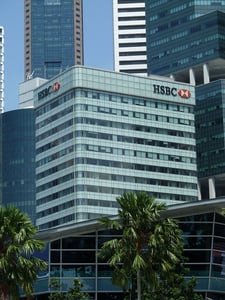Tissue Regenix Group plc (LON:TRX) is the topic of conversation when Hardman and Co’s Head of Life Sciences Dr Martin Hall caught up with DirectorsTalk for an exclusive interview.
Q1:Could you give us all a brief reminder about what Tissue Regenix does?
A1: The human body has a tremendous ability to heal itself from small injuries, however, when the injury is much larger, it needs some help to repair itself. Tissue Regenix makes products to do this through its two proprietary platforms, to make safe and sterile scaffolds that retain the inherent properties of tissue and bone, which can be used to repair diseased or degenerated body parts.
Once made, its products are sold directly to hospitals for use by surgeons in operating theatres or commercialised via blue chip third parties specialising in orthopaedics and urogynaecology, such as Arthrex, Johnson & Johnson and ARMS Medical.
Q2: The company has just issued a trading update. Could you summarise the key details?
A2: Taking a step backwards, over the past 2-3 years, the management team has been focusing on the so-called four “S”s – namely, supply of product, sales traction, sustainability and scale.
Following completion of PHASE 1 of its capacity expansion programme in July 2021, there was early evidence of the benefits through increased sales in the second half of 2021. So, the key question on investors’ minds was: “Will this sales growth rate be sustainable?”
So, in answer to your question, the company indicated that group sales for the first half of 2022 increased 27% to $11.8m, which was about $0.5m ahead of our forecast. Given that there was strong demand for the BioRinse products in 2H’21, we believe that they continued to lead the way again in 1H’22 , rising about 30%. However, the company also indicted that the dCELL range had benefited from a return of elective surgeries nearer to pre-pandemic levels, suggesting a double digit growth rate for this division as well. But even on 15% growth in dCELL sales, by implication to make the total add up to the stated level, the GMB-v division also had strong growth, which, if we are right, would be a surprise.
Therefore, the market should be comforted that the management team has got another six months of strong sales growth under its belt, vindicating the whole strategy.
Q3: Given that strong sales performance, what are the implications?
A3: First, tracking these figures through the income statement suggests greatly narrowed EBITDA and EBIT losses for the first half. However, what we do not know is the leverage effect of increased sales on profitability due to the improved manufacturing efficiencies in a reorganised and larger manufacturing plant, so we might have a positive surprise when the numbers are announced on 7 September.
Secondly, what is clear, is that these first-half sales numbers suggest that the current full year expectations in the market are too low. Current forecasts would only be correct if there was a sudden tail-off in sales growth, which seems very unlikely, notwithstanding the constant risk of another serious covid variant emerging which might curtail hospital activities. So, if sales forecasts for the full year are too low, this brings me back to the first point in answering this question about the leverage effect of strong sales on profitability, so there is also the potential for a positive surprise for the full year.
Q4: What is the key value added in the research report that you have just published?
A4: Well, the company did provide group sales growth in its trading statement and indicated good performance from its two main divisions, but the note has put this in perspective with graphs of sales by division for each six months over a five year period, highlighting recent progress and the potential shortfall in market forecasts for the full year.
In addition, the implied performance of GBM-v and its return to good growth. The note also features on the implications for EBITDA and EBIT for both the interim and full year for fiscal 2022, and the potential for some positive surprises.
Q5: What do you think will happen to the shares?
A5: Given the tough market conditions for biotechs at the present time, the market may well wait for confirmation about my analysis until the details are published on 7 September and continue to trade around current levels.
However, provided there is no major outbreak of a serious variant of Covid during the summer in the US, I can only see upside potential in the numbers, so wise investors might want to dip their toe in sooner rather than later. Also, I always like to point out some basic facts.
To get Tissue Regenix to where it is today with a number of approved products and operating in a highly regulated environment with huge barriers to entry, has cost £103m or 1.5p per share, yet its market capitalisation is under £35m. This suggests that it is significantly undervalued by the market, which should correct when the market is reassured. This all augurs well for shareholders.







































